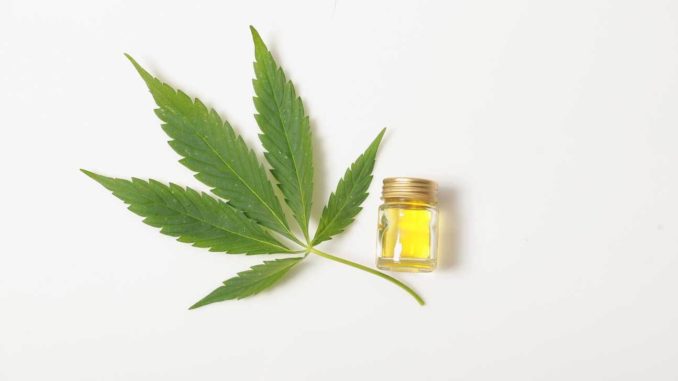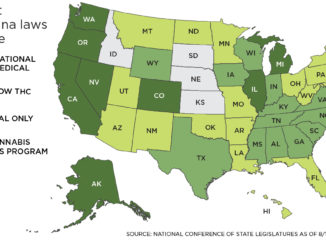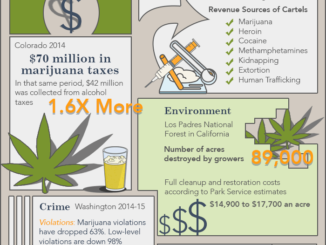
Background
CBD (Cannabidiol) oil is derived from hemp. Many people confuse hemp with marijuana, but hemp is a very different plant. Marijuana and hemp may share the same scientific name, Cannabis sativa, but they are not the same.
Marijuana is cultivated primarily for its psychoactive cannabinoid, a chemical compound called tetrahydrocannabinol or THC, for recreational and medicinal use. Marijuana contains both THC and CBD.
Hemp contains only a trace of THC, less than 0.3% compared to marijuana’s hefty 5-35%. The main cannabinoid in hemp is CBD, but there are over 100 other cannabinoids in hemp, as well as compounds that produce tastes and scents called terpenes (e.g. citrusy smell of oranges, unique aroma of pine trees, or sweet flower smell of lavender).
For thousands of years, hemp has been cultivated for food, clothing, fiber, and fuel. It is one of the world’s oldest domesticated crops. In the early days, hemp was a vital crop in the U.S. During the 1700s, colonial farmers grew hemp mainly for its strong fiber.
However, hemp production came to a screeching halt when the Marijuana Tax Act of 1937 was passed. Mainstream attitudes towards cannabis began to sway greatly towards the negative. Hemp became the “evil weed” because it shares the same species as marijuana even though it does not contain marijuana’s abundant THC.
Over the years, many have speculated that the real reason for the anti-cannabis campaign boiled down to the worry that hemp could become a low-cost substitute for paper pulp. American industrialist William Randolph Hearst and the DuPont family had major investments in the timber and newspaper industries. They initiated a smear campaign to destroy the lucrative hemp market for fear that the rise of hemp would undercut their profits. Nevertheless, years later, it became known that hemp does not contain a high enough concentration of cellulose to be an effective paper substitute.
Eighty long years later, hemp finally regained its legal status in the U.S. after the passage of the 2018 Farm Bill. Hemp, defined as cannabis with less than 0.3% THC, is removed from Schedule I controlled substances. Hemp-derived products are legal as long as they come from licensed hemp growers. More and more universities and hospitals have begun to study it. Americans can now use CBD legally. It can be ordered online and shipped to all 50 states.
Marijuana laws are also changing at a rapid pace across America. Even though it is still illegal on the federal level, many states have legalized marijuana. For the remaining states, some have allowed it for medical use and some recreational use.
The Human Endocannabinoid System (ECS)
Cannabinoids made by our own bodies are called endocannabinoids (the prefix “endo” means within). In the 1990s, researchers made an astonishing discovery that the ECS plays a major role in our overall health.
The ECS maintains constant communication with every organ system in the body.
This communication involves messenger molecules called endocannabinoids and cannabinoid receptors on every cell that accepts them. Think of it as a “key and lock” system. The receptors are locks and the endocannabinoids are keys that bind to these receptors and unlock them.
There are two main types of receptors within the ECS – cannabinoid receptor type 1 (CB1) and cannabinoid receptor type 2 (CB2).
Researchers found more than 1,000 receptors in the body. CB1 receptors are located largely on nerve cells in the brain and spinal cord, as well as the eye and retina. CB2 receptors are predominantly found in the immune system and in the organs and tissues, such as brain, spleen, blood cells, gastrointestinal, and urinary tracts.
The body produces two types of endocannabinoids – anandamide and 2-AG. These are transported into the cells through the CB1 and CB2 receptors. As we age, the body becomes less efficient in producing anandamide and 2-AG. The proper functioning of the ECS also depends on the adequacy of omega-3 in the diet.
Many people have experienced the feel good sensation or “high” after strenuous exercise. The lifted mood comes from the release of endorphins. Researchers now know that it is also from an increase in anandamide, which targets mainly the CB1 receptors and, to a lesser extent, the CB2 receptors.
The other endocannabinoid, 2-AG, transmits signals across the brain cells and activates both CB1 and CB2 receptors. 2-AG supports brain health, immune health, as well as insulin sensitivity.
Researchers have now discovered that both endocannabinoids, anandamide and 2-AG, have a considerable impact on a variety of functions including appetite, energy and balance, immunity, memory, metabolism, nervous system, sleep, and stress response.
Evidence For CBD Health Benefits
The Cannabis plant contains over 100 cannabinoids. These compounds closely resemble the human endocannaboids. The main cannabinoid in hemp is CBD, and in marijuana, THC.
Unlike THC, CBD does not bind directly into our cannabinoid receptors. Nevertheless, it does stimulate the activity of both CB1 and CB2 receptors without directly tapping into them. A study by the National Institute of Health found that CBD causes the body to release more endocannabinoids, especially 2-AG. Moreover, CBD inhibits the degradation of anandamide.
Scientists are now beginning to discover many of CBD’s health benefits:
Childhood Eilepsy
CBD has been touted for a wide variety of health interests, but the strongest scientific evidence is for its effectiveness in treating two rare drug-resistant childhood epilepsy conditions, namely Lennox-Gastaut syndrome (LGS) and Dravet syndrome (DS). The FDA has recently approved the first ever CBD-derived drug Epidiolex for these conditions. In numerous studies, CBD was able to reduce the number of seizures, and in some cases it was able to stop them altogether.
Pain Relief
CBD may offer an option for treating different types of chronic pain: fibromyalgia, gout, HIV, multiple sclerosis, neuropathic, and rheumatoid arthritis. Studies found that applying CBD oil directly on the problem area helps to lower pain and inflammation. CBD works by impacting cannabinoid receptor activity in the body, reducing inflammation, and interacting with neurotransmitters.
Researchers also found that subjects did not build up a tolerance to the effects of CBD, so there was no need to increase dosage continually. Unlike some pain medications, CBD is not addictive and does not have any intoxicating effects, offering much relief for people who have chronic pain.
An oral spray called Sativex, which is a combination of CBD and THC, has been approved in a number of countries in Europe and Canada (but not in the U.S.) to treat pain and muscle spasms related to multiple sclerosis.
Another controlled study found that Sativex significantly improved pain during movement, pain at rest, and sleep quality in people with rheumatoid arthritis.
Anxiety and Depression
Clinical trials have revealed that both marijuana and CBD may be effective in reducing different forms of anxiety including generalized anxiety disorder, panic disorder, social anxiety disorder, obsessive-compulsive disorder, and post-traumatic stress disorder (PTSD).
Not only did participants in the studies felt better, they also reported reduced cognitive impairment and anxiousness. Scientists suggest that in addition to impacting the endocannabinoid system, CBD may influence receptors involved in the modulation of serotonin, a chemical messenger that plays a role in anxiety regulation.
In addition, some studies showed that CBD eases depression and helps with psychotic disorders like schizophrenia. (Please note that marijuana does not help with either and may actually worsen psychosis.)
Cancer-Related Symptoms
Researchers found that cancer patients treated with CBD and THC, the psychoactive compound from marijuana, experienced significant reduction in pain. In addition, a one-to-one combination of CBD and THC administered via mouth spray reduced side effects associated with cancer treatments like nausea, vomiting, and loss of appetite.
At present, more research needs to be done on whether CBD alone can produce the same beneficial outcomes.
A number of cell culture studies found that cannabinoids can help slow tumor growth, reduce tumor invasion, and induce tumor cell death in various types of cancer, including brain, blood, breast, colon, pancreatic, and prostate.
Scientists believe that CBD probably works by starving cancer cells of energy, making them more sensitive to the body’s immune response, and by blocking a newly discovered cannabinoid-related cancer pathway. However, human trials are needed before further conclusions can be drawn.
Other Potential CBD Benefits
- Lowers blood pressure (caution if taking blood pressure medication).
- Lowers LDL (bad) cholesterol and total cholesterol.
- Lowers uric acid levels and reduces gout symptoms.
- Helps with insomnia due to relaxing and anxiety-reducing effects.
- Helps people to quit smoking and is a promising treatment for those with opioid addiction.
- Mitigates neurodegenerative conditions like Alzheimer’s, Parkinson’s, and ALS (Amyotrophic Lateral Sclerosis). Some research suggests CBD could protect brain cells from damage and oxidative stress. Early results have been broadly positive but more studies are necessary.
- Reduces likelihood of developing type 1 and type 2 diabetes, especially at the early disease stages (no human trials yet).
- Lessens inflammation and symptoms of inflammatory bowel disease (no human trials yet).
CBD Side Effects And Safety
CBD is generally well tolerated and rarely produces side effects. However, some people should take additional precautions, including:
- People with weakened immune system. In cell studies, CBD was associated with decreased activity of T and B immune cells, hence, increasing the likelihood of infections and worsening HIV, tumor growth, metastases, and asthma.
- People taking medications. CBD may decrease the activity of liver enzymes, called cytochrome P450, responsible for metabolizing more than 60% of prescribed drugs. Check with your doctor to rule out any interactions as CBD may increase or decrease the effects of your medications.
- Use caution when combining CBD with herbs or botanicals in dietary supplements. There is limited research on such interactions.
- Use caution when combining CBD with alcohol.
Most people who use CBD do not report any side effects, but some may include a slight decrease in blood pressure, dry mouth, light headedness, drowsiness, gastrointestinal upset, decrease in appetite, and mood changes.
Pregnant, Lactating Women And Children
At present, there is a lack of research regarding the safety of CBD use for pregnant and lactating women as well as children. Please consult with your doctor before use.
Avoid using marijuana while pregnant. Studies show that THC can interrupt the formation of neuronal networks and result in nervous system-related birth defects. Teenagers should not use marijuana either as the THC may have an effect on their developing brains.
Important Considerations When Buying CBD Oil
- Do not buy from vendors selling on Amazon. It is hard to verify the authenticity and quality of the products.
- It is best to buy USA grown hemp from licensed farmers. China is now a big exporter of CBD oil and has over 10% of the global market.
- Only buy CBD products that use the whole hemp plant, not synthetics and not isolates, as the whole plant contains the full spectrum of cannabinoids and terpenes, the active compounds that give plants their taste and smell. Herbalists believe the terpenes in hemp interact synergistically with the cannabinoids to create an “entourage effect” that enhances the healthful effects of each individual component.
- Only buy organically grown hemp utilizing eco-farming practices and without pesticides and herbicides.
- Make sure the hemp is processed using CO2 extraction that is gentle, clean, and does not use harsh solvents, ETO (ethylene oxide) or gamma radiation. This method does not require heat and the entire spectrum of cannabinoids are retained in the blend.
- Only buy CBD products that are all natural and contain no additives, preservatives, emulsifiers, or flavorings.
- When buying CBD oil, the label should indicate how much CBD is in the bottle (in milligrams or mg) and its concentration (e.g. 1 drop = 2.4 mg of CBD).
- Only buy from a company that provides third-party lab-verified test results for each batch of CBD it sells. Since CBD oil is not regulated, there is no guarantee the consumer will get what is being advertised by a company. The Certificate of Analysis (COA) verifies that the product actually contains what it claims as well as the concentration of the CBD. It should include an analysis showing the levels of pesticides, herbicides, mold, fungi, mycotoxins, and heavy metals in the product. If the company cannot produce a COA, do not buy its products.
How To Use CBD Oil
First and foremost, there is no addiction with CBD oil. The U.S. federal government puts THC addiction at about 4%. CBD is zero. So there will not be any problems quitting cold turkey.
Additionally, the reason there have never been any deaths linked to cannabis overdose is because our brainstem, which controls our heart and breathing, have hardly any cannabinoid receptors. (The safety of vaping is a separate issue which is still under investigation.)
CBD oil can be taken sublingually, orally or topically. For sublingual use, hold the drops under the tongue for one minute before swallowing. For oral use, add to drinks or a smoothie. For topical use, apply the oil directly to the problem area.
Dosage
Effective dosage varies from person to person and can be different for every ailment or disorder.
For pain, the majority of CBD users use between 10 and 30 mg of CBD per day. Start with 5 mg of CBD on the first day. If you do not notice any positive effects, increase by 5 mg the following day. Repeat this process for several days until you notice positive results.
For psychological disorders like anxiety or depression, start off with an initial dose of 2 mg per day. Increase by 2 mg every day until you notice positive results.
Consistency is the most important part of taking CBD oil. It is good to split the drops between morning and night, taking it roughly at the same time each day. From there, you can adjust the number of drops up or down as you start noticing the impact it has on your body.
Drug Testing
As mandated by U.S. law, full spectrum CBD oil contains less than 0.3% THC. However, depending on the sensitivity of the drug test and the individual, it is possible that one can test positive for THC using full spectrum CBD oil.
Summary
- CBD is now legal in the U.S. It comes from hemp and does not give you a “high”. It contains less than 0.3% of THC, which is the psychoactive compound in marijuana.
- CBD is non-addictive and the body does not build up a tolerance to it.
- Studies showed that CBD is quite safe and there are very few reported adverse effects. However, if you have a weakened immune system or are taking any medications, consult with your doctor before using CBD. Use caution if you drink alcohol or are using herbs or botanicals. Pregnant and lactating women and children should check with their doctors before using CBD.
- There are now two CBD-derived drugs – one for two rare forms of childhood epilepsy and one for multiple sclerosis.
- CBD has natural pain relief and anti-inflammatory properties.
- CBD may help reduce anxiety in people with certain related disorders.
- CBD, in conjunction with THC, are effective in alleviating cancer and cancer treatment-related symptoms.
- Hemp tends to suck up all the harmful chemicals from the soil. Therefore, it is pertinent that the CBD oil comes from plants grown using organic and sustainable farming practices.
- Buy CBD products that are whole-plant extracts (not synthetic or isolates) using CO2 extraction that retains the full spectrum of cannabinoids and terpenes.
Proudly WWW.PONIREVO.COM
by Carol Chuang



